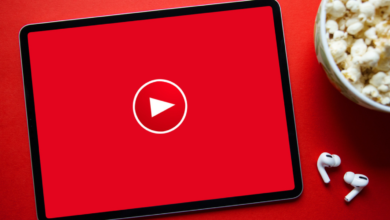How Content Marketing Helps Non-Profits Achieve 3 Important Goals

Although content marketing is often associated with for-profit businesses and companies, non-profit and non-governmental organizations (NGOs) rely on content marketing to find their way online as well.
I can guarantee your nonprofit has a mission.
Can you ensure that the audience knows what your mission is?
This is where content marketing comes in.
If you are not sure What is content marketing or why It is important to read this first.
Often, both for-profit and non-profit organizations treat sales and marketing as two separate entities.
Even though nonprofits and NGOs don’t sell anything, they raise money and definitely need to be discoverable to support their organizational goals.
Both types of businesses see much more success when combining forces and making sure the “sales” (or fundraising) and marketing teams are on the same page.
Even if you run a small nonprofit where the fundraising and marketing “teams” work as one, you can still benefit from reviewing the steps below.
Ultimately, your nonprofit or nongovernmental organization has three main goals: to promote your organization’s message, increase brand awareness, and help rally supporters around a cause.
Content marketing can help with all three. Here’s how.
Promote your organization’s message
Before promoting your organization’s message, make sure you have a solid understanding of the impact of asking for time.
Studies have shown that people are more likely to have a positive reaction when they are asked to share their time—creating an emotional response they are likely to remember—versus when they are asked to share a monetary donation.
Of course, your nonprofit needs financial donations to survive, but it’s best to create an emotional response first, which in turn will motivate donors to donate more than if they were directly asked to donate up front.
Your nonprofit or NGO’s content marketing should include mention of the opportunity for financial donations; However, make sure it also includes a call for time donations as well.
In addition, offering the opportunity to donate other personal resources, such as expertise, that will ultimately impact your nonprofit will also be helpful.
Ultimately, the goal of promoting your organization’s mission should cultivate a giving mindset—one in which donors don’t feel pressured to contribute money alone.
And increase brand awareness
In order to start increasing awareness of your brand, the general public must first know that you exist and know what your organization’s goals are (hence the importance of promoting your organization’s mission first).
Remember the Ice Bucket Challenge?
You could be next!
When you set a goal to increase brand awareness, you are setting an intrinsic goal of increasing traffic to your site, increasing donations (revenue), earning the trust of your audience, and setting yourself up as an authority in your industry.
Sometimes, you will focus on one goal at a time; Other times, you’ll be able to kill two (or three or four) birds with one stone.
To get started, you’ll need to decide what type of content you want to use to promote your brand:
- video.
- Webinars.
- electronic books.
- e-mail.
- Podcasts.
Some brands may work while using all of the above; However, others may want to focus on one or two.
No matter what your nonprofit or nongovernmental organization is centered around, you should choose at least two content marketing strategies listed above to help increase your brand awareness.
Just as there are many “learning styles” in the classroom – teacher-led hands-on training – there are many content consumption styles.
If your brand is available for consumption through many platforms, you are likely to see an increase in donations.
Help rally supporters around a cause
As the number of places and platforms your brand appears on increases, so does the authority you possess.
If you consistently produce high-quality content, not only will you have an audience that finds you trustworthy, but you will also have an audience that will pass on your content — whether through a retweet, share, or good old word-of-mouth.
Get emails
It is crucial that you keep in touch with any and all people who are interested in your case.
If someone lands on your website, make sure you have a way to ask them to share contact information so you can continue the conversation.
The more emails you get, the more potential donors you will have.
If you’re on a platform that’s known to work with nonprofits (Like Salesforce), they have a lot of non-profit documentation and software on how to get emails and use them wisely as a non-profit specifically.
Know your audience
Conduct surveys at least once a year for your target circles (donors, volunteers, and anyone on your mailing list).
Ferris Bueller taught us that: “Life moves really fast. If you don’t stop and look around once in a while, you might miss it.”
This feeling does not exclude your supporters.
As the world changes, people also change how they feel and act.
In fact, your organization’s priorities may change.
Use annual surveys to look at what your audience values and what compels them to take action.
Make your content debatable
Knowing your audience will help you decide how to make your content relevant.
By nature, people want to help others, but people also lead busy lives and may need to be reminded of the ways they can help.
Part of your content marketing plan should include creating relevant content.
If your videos, webinars, podcasts, etc. include descriptions or examples of opportunities that the average citizen can relate to or participate in, you will see an increase in supporters for your cause.
Create the opportunity for user-generated content
Along with making your content relevant to it comes user-generated content.
If you offer your donors a chance to show their support for your cause by posting while using the hashtag, not only will people rally around your cause, but you will increase your brand awareness.
It’s the win!
Encourage your users and followers to include their personal message along with the hashtag so they feel a personal connection to your cause.
Takeaway
Content marketing is not limited to for-profit businesses; Nonprofits and NGOs can and should reap the benefits, too.
When you see Content Marketing Tips and Tricks, don’t keep scrolling – read on!
To maximize your “sales,” work as a team to promote your organization’s message, increase brand awareness, and help build supporters using a variety of platforms.
More resources:
- 5 lessons you can learn from over 1,000 bloggers to improve your content
- Content Marketing: Top 5 Things You Need to Know
- Content Marketing: The Ultimate Guide for Beginners
Featured image: Dragana Gordic / Shutterstock




